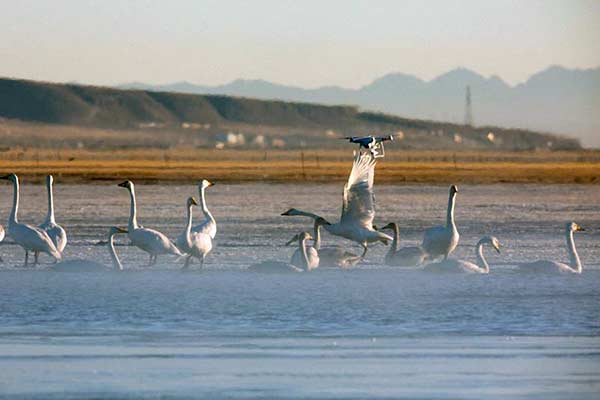Drones add new wrinkle for wildlife
Updated: 2016-01-08 07:56
By Chen Liang(China Daily)
|
||||||||
|
A drone with a camera hovers above swans at Qinghai Lake in January 2015. Provided to China Daily |
Flying camera gets close to swans at Qinghai Lake, sparking discussion about interference
Recent news about an amateur photographer who frightened hundreds of wild swans wintering at Qinghai Lake by flying a drone equipped with a camera too close to the flock has created a feisty debate on the Internet, especially among bird-watchers and drone enthusiasts.
Many netizens said China needs to publish guidelines and regulations quickly to ensure proper operation of drones, especially around critical wildlife habitats.
Xihai Metropolis Daily in Xining, Qinghai province, reported on Friday that one member of a group of photographers had used a drone to photograph about 300 swans roosting at the lake's Quanwan Bay. Several photographers took photos of the drone hovering about a meter above the swans, who flew away after being disturbed.
On Sunday, some of the photographers returned and found only a few dozen birds at the site. A day later, the photos of the intruding drone were uploaded online, stirring a heated debate about proper use of the remote-controlled devices.
Some enthusiasts said the drone was a popular model produced by Chinese technology company DJI. As the market leader in easy-to-fly drones and aerial photography systems, DJI's flying cameras have given amateurs convenient and affordable assess to aerial photography.
A person online using the name Bing He said he was a photographer and witnessed the entire swan incident. He told ThePaper.cn that the flying camera hovered about a meter over the swans' heads for several minutes, eventually scaring the birds away.
Yin Yuping, a commentator for Nanning Radio, wrote on his micro blog that people should not blame the drones because the real threat is human beings. "We will blame them," he said.
He Yubang, head of the Qinghai Lake Nature Reserve Administration, visited Quanwan Bay on Monday and counted about 80 swans.
He said the drone disturbance was the first of its kind at the lake, though amateur photographers had used firecrackers and honking to previously rouse the roosting swans.
"We still can't say that the swans have left our reserve," he said. "The suitable wintering habitats for swans are many in the lake. They probably just moved to other sites."
He said that the authorities have decided to ban the use of flying cameras at Quanwan Bay and will urge the public to report cases of wildlife disturbances within the reserve.
Li Haitao, a Beijing bird-watcher who in 2006 became one of the first in the city to fly a drone, recorded and took photos of birds with drones from the very beginning.
Compared with their effect on small-sized birds - such as various shore birds - swans are "actually not very sensitive to drones", he said.
Li followed a bevy of wild swans with his drone-mounted camera for several weeks in Beijing in the winter of 2011 and videotaped the birds at a range of several meters.
"They kept cool, with the adult birds just keeping an eye on my drone's movements, while the juvenile birds looked quite curious," he told China Daily. "I didn't try to get much closer and stayed no longer than one minute. Still, there was a certain interference. I have stopped doing it since then."
Whether people consider themselves photographers or nature lovers, they should put the wildlife's welfare above the quality of their photos, Li said.
The government follows some drone management practices in use in the United States, He said, including real-name registration for drone owners and barring drones from restricted areas.
- Obama says US must act on gun violence, defends new gun control rules
- Over 1 million refugees have fled to Europe by sea in 2015: UN
- Turbulence injures multiple Air Canada passengers, diverts flight
- NASA releases stunning images of our planet from space station
- US-led air strikes kill IS leaders linked to Paris attacks
- DPRK senior party official Kim Yang Gon killed in car accident

 Special report: Rise and rise of China's outbound tourism
Special report: Rise and rise of China's outbound tourism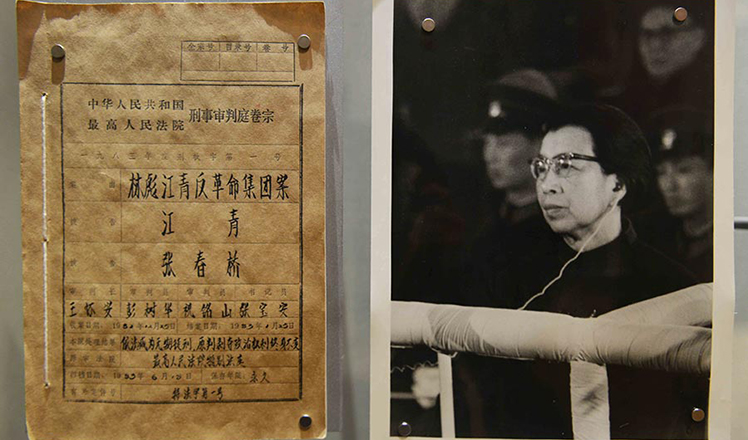
 Trial data of former senior Party officials on display
Trial data of former senior Party officials on display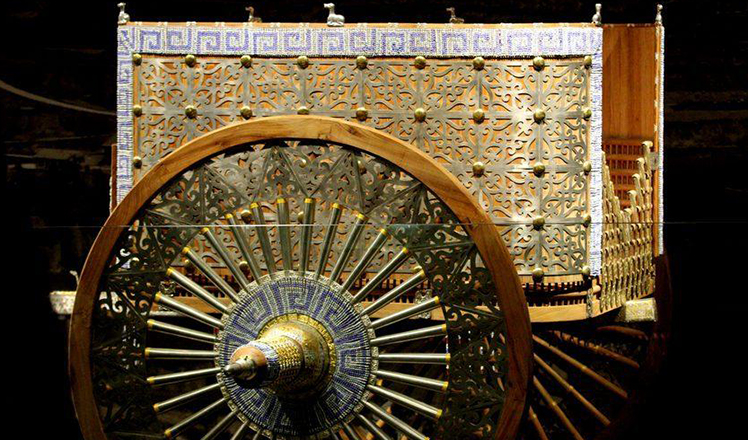
 Replica of luxurious chariot from ancient times wows Xi'an visitors
Replica of luxurious chariot from ancient times wows Xi'an visitors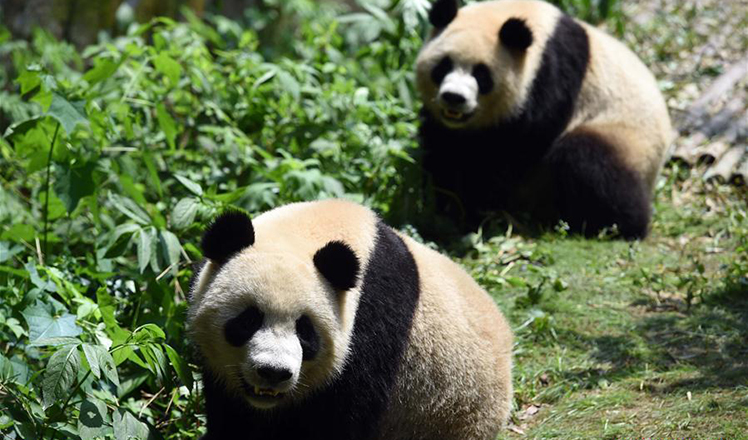
 Number of giant pandas in China reaches 422
Number of giant pandas in China reaches 422
 Attendees feel the thrill of tech at CES trade show
Attendees feel the thrill of tech at CES trade show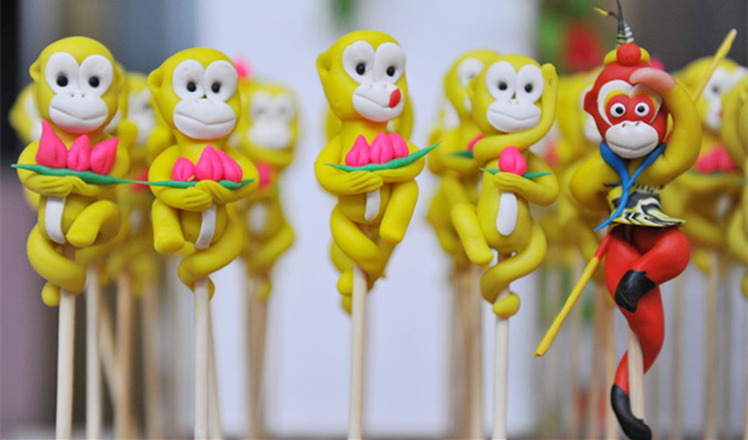
 Vivid dough sculptures welcome Year of the Monkey
Vivid dough sculptures welcome Year of the Monkey
 Kidnapped five-year-old reunites with her family 56 hours later
Kidnapped five-year-old reunites with her family 56 hours later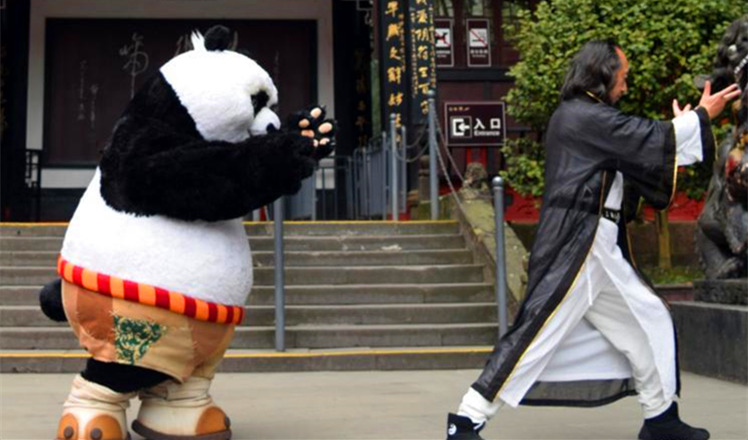
 Kung Fu Panda hones skills from master
Kung Fu Panda hones skills from master
Most Viewed
Editor's Picks
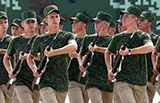
|

|

|

|

|

|
Today's Top News
Shooting rampage at US social services agency leaves 14 dead
Chinese bargain hunters are changing the retail game
Chinese president arrives in Turkey for G20 summit
Islamic State claims responsibility for Paris attacks
Obama, Netanyahu at White House seek to mend US-Israel ties
China, not Canada, is top US trade partner
Tu first Chinese to win Nobel Prize in Medicine
Huntsman says Sino-US relationship needs common goals
US Weekly

|

|
